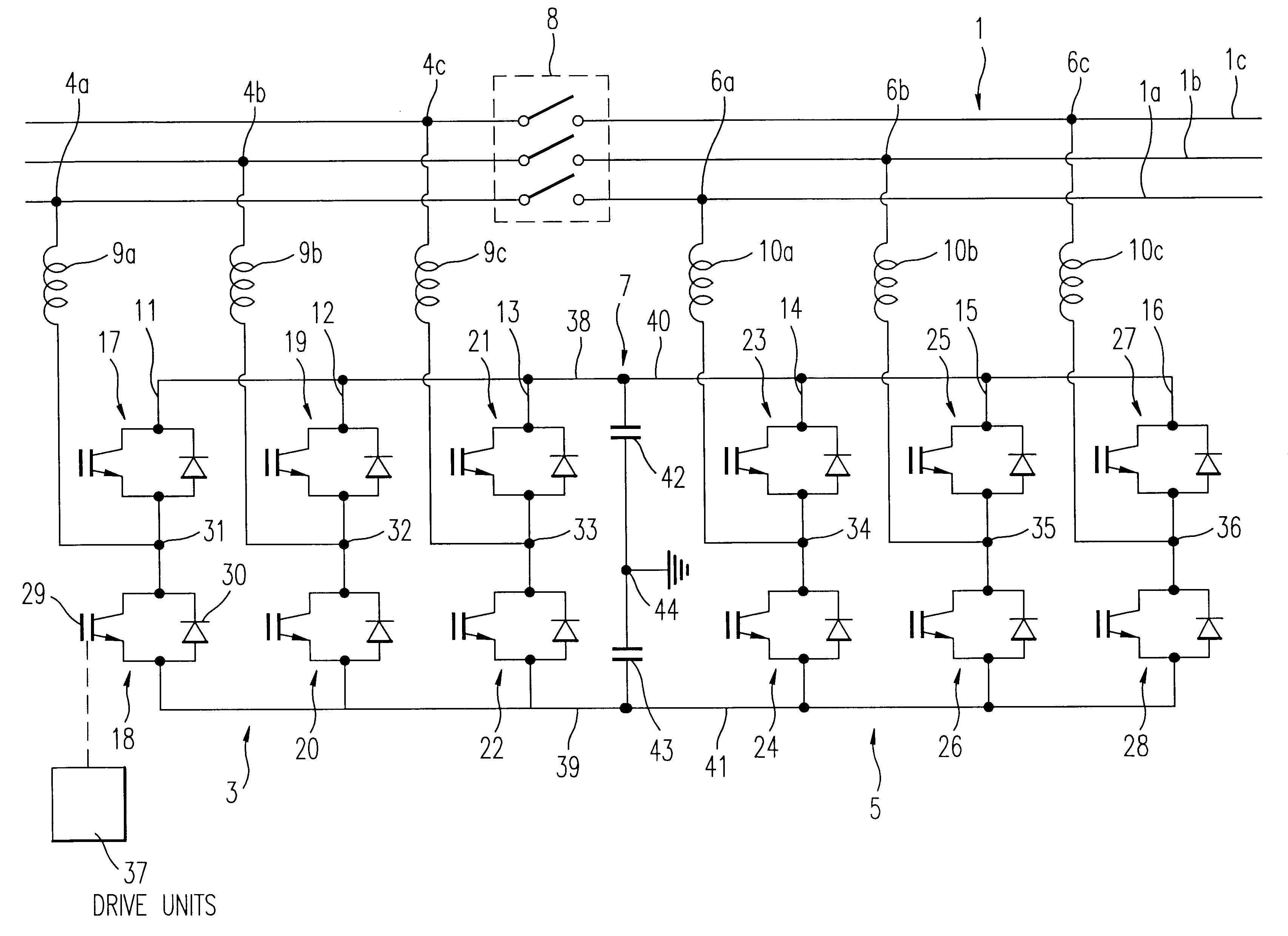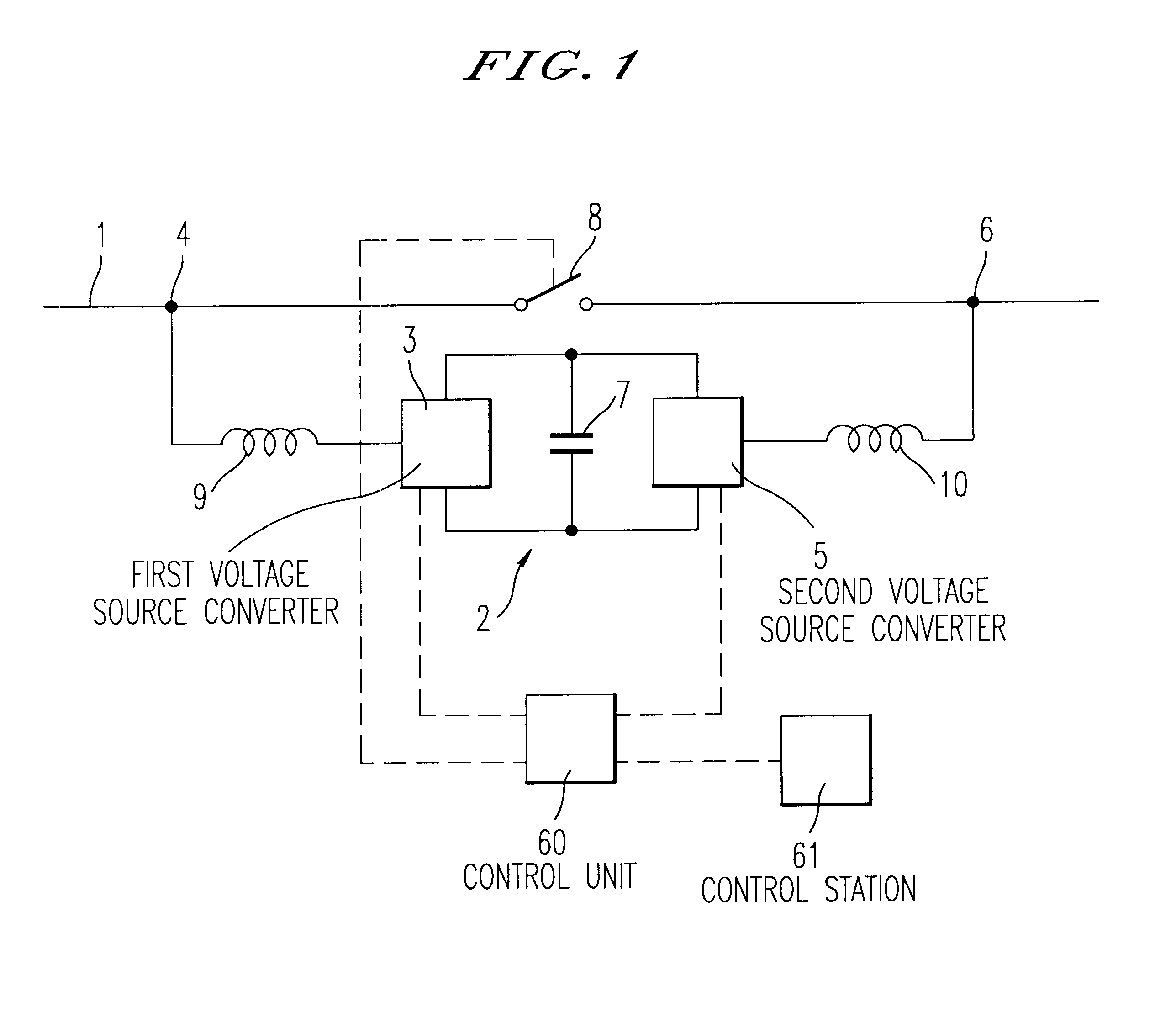Voltage source converters operating either as back-to-back stations or as parallel static var compensators
a voltage source converter and back-to-back station technology, applied in the direction of dc-ac conversion without reversal, process and machine control, instruments, etc., can solve the problems of high cost and bulky of the transformer
- Summary
- Abstract
- Description
- Claims
- Application Information
AI Technical Summary
Benefits of technology
Problems solved by technology
Method used
Image
Examples
Embodiment Construction
In FIG. 1 the construction of a device according to the invention is schematically illustrated a single line diagram. A transmission line for carrying alternating current and having one or several phases is denoted as 1. A device for controlling the flow of electric power in this transmission line 1 is denoted as 2. This device 2 comprises a first VSC (VSC=Voltage Source Converter), schematically indicated at 3, connected to the transmission line 1 at a first point 4 and a second VSC, schematically indicated at 5, connected to the transmission line 1 at a second point 6, said first and second VSCs 3, 5 having their DC sides connected to a common capacitor unit 7. Furthermore, the device 2 comprises a by-pass switch 8 connected to the transmission line I between said first point 4 and said second point 5 in parallel with the first and second VSCs 3, 5. Each VSC 3, 5 is preferably connected to the transmission line 1 via a phase reactor 9, 10.
The term VSC-converter, i.e. the type of c...
PUM
 Login to View More
Login to View More Abstract
Description
Claims
Application Information
 Login to View More
Login to View More - R&D
- Intellectual Property
- Life Sciences
- Materials
- Tech Scout
- Unparalleled Data Quality
- Higher Quality Content
- 60% Fewer Hallucinations
Browse by: Latest US Patents, China's latest patents, Technical Efficacy Thesaurus, Application Domain, Technology Topic, Popular Technical Reports.
© 2025 PatSnap. All rights reserved.Legal|Privacy policy|Modern Slavery Act Transparency Statement|Sitemap|About US| Contact US: help@patsnap.com



